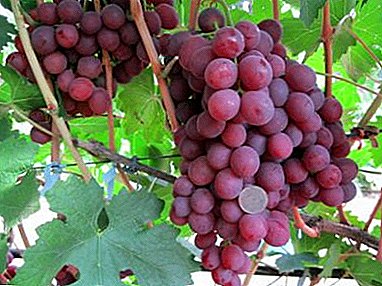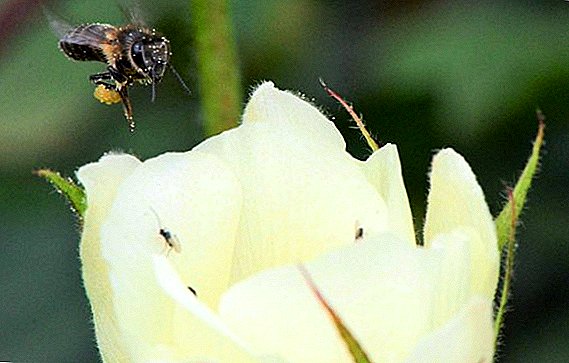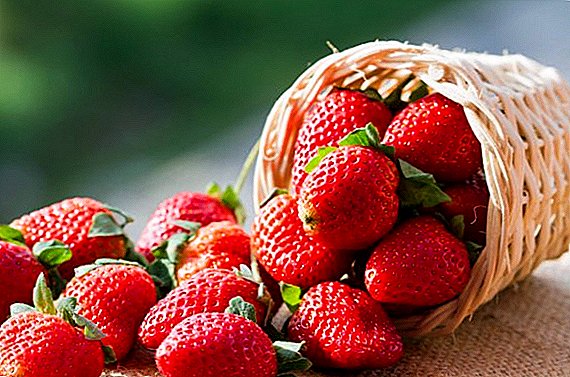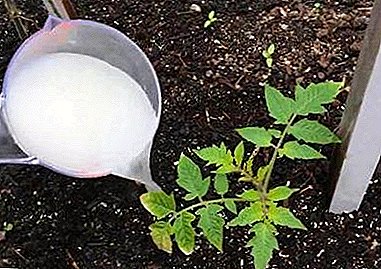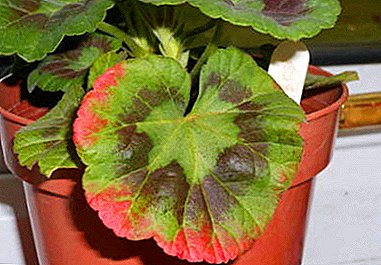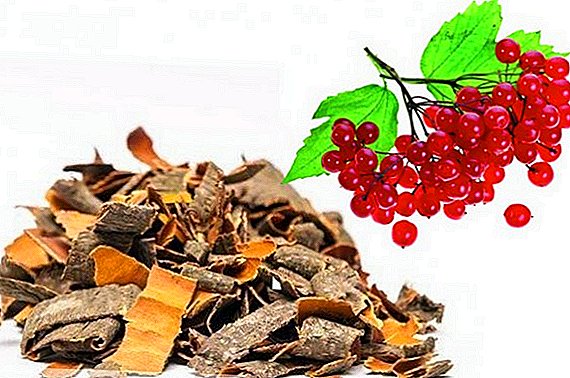 Kalina ordinary - a plant familiar to us from childhood, which is common in the Northern Hemisphere, South America (the Andes) and even in Madagascar. For medicinal purposes, the bark of the tree, the leaves, the fruits and their bones are used. Today we will tell about the beneficial properties of the bark.
Kalina ordinary - a plant familiar to us from childhood, which is common in the Northern Hemisphere, South America (the Andes) and even in Madagascar. For medicinal purposes, the bark of the tree, the leaves, the fruits and their bones are used. Today we will tell about the beneficial properties of the bark.
Botanical description
Shrubs of red viburnum live about 50 years. They are rarely found in the form of trees, reach a height of 1 to 4 meters in height. The bark has a gray-brownish tint. The plant has rounded bare shoots. Kidney scaly, egg-shaped, sometimes sticky, slightly shiny, having a color from gray-yellow to dark green and brown shades.
Important! Berries of bright red color are suitable for consumption; fruits of Caucasian black viburnum are the strongest poison!
The leaves are wide, three-five-bladed, with a jagged or solid edge. Flowers actinomorphic (correct), umbellate inflorescence. Fruits are drupes of a round or oval shape of bright red color, up to 10 mm in diameter, juicy, with a tart flavor that disappears when the first frosts hit.
We recommend that you read about how to grow viburnum on your site, as well as what are the most common types of viburnum.

Chemical composition
Chemical composition per 100 grams of dried tree bark:
- Viburnin - from 3 to 6%;
- choline-like compounds — about 20 mg;
- triterpene saponins - up to 7%;
- Vitamin K1 - 28-31 mg / g;
- ascorbic acid - 70-80 mg;
- carotene - 21 mg;
- up to 6.5% tar;
- tannins;
- Organic acids in the following range: formic, acetic, isovaleric, capric, caprylic, butyric, linoleic, crotonic, palmitic, oleanolic and ursolic;
- phytosteroline;
- phytosterol.
Important! In the bark of viburnum contains an increased dose of vitamin K, it is responsible for the rapid blood clotting. Taking medications with viburnum can be dangerous for people with a predisposition to thrombosis and pregnant women.
Medicinal properties
Such a rich and non-standard chemical composition of the bark makes it possible to use it as a major component in pharmacology to solve very serious problems:
- Viburnin contained in the cortex has a vasoconstrictive effect and enhances the work of the muscles of the uterus. It also reduces cramps. The same effect is achieved by using a decoction of viburnum inflorescences;
Familiarize yourself with the beneficial properties of white willow and aspen bark.
- tannins in contact with the cavity of the stomach form a protective film. It prevents the likelihood of irritation, the possibility of inflammatory processes;
- valeric and isovaleric acids act on the nervous system as sedatives, have an antispasmodic effect;
- phytosterols have a diuretic and cardiotonic effect, lower cholesterol;
- preparations containing the extract accelerate blood clotting, reduce the duration and volume of blood excretion, increase the concentration of platelets in the blood.
Important! Broth viburnum depressing effect on sperm, has a slight contraceptive effect.

Medical applications
Bark extracts are used to stop bleeding from the nose, and blood loss of the lungs (with tuberculosis), as antimicrobial - when rinsing the mouth and throat with angina, chronic tonsillitis, stomatitis and periodontal disease.
Decoction Kalinova bark used in diathesis and eczema. When running cases of hemorrhoids take baths with a decoction in a sitting position, application bands on hemorrhoids with bleeding. Berry extract - the main component in the composition of some candles from hemorrhoids.
In the fight against diathesis in traditional medicine, they also use the princess, the yarrow, the string, the radish and the alder.
Preparations based on the bark of a shrub are used in gynecology to solve the problem of uterine and postpartum bleeding, or against the background of gynecological diseases. Used as a hemostatic with heavy menstruation, menopause.
In case of skin diseases such as psoriasis, diathesis, allergy, scrofula, eczema, skin tuberculosis, lichen, a good effect is given by the complex use of the kalin bark. On the base of the decoction they make baths and lotions, parallel to the inside, using tincture or decoction. 
Contraindications and side effects
There are no universal solutions to a panacea for all problems, and with viburnum. It is contraindicated in the following diseases:
- gout (acids in the bark have a bad effect on the joints);
- kidney disease (urolithiasis);
- arthritis;
- thrombophlebitis;
- phlebeurysm;
- increased blood clotting, and tendency to thrombosis;
- hypotension (especially when using juice with honey);
- increased acidity of gastric secretion;
- allergic reactions to vitamin C.
Important! Hypertensive patients need to control the reception of viburnum, and definitely not to use berries along with the bone, because she can lower her blood pressure to fainting.
Preparation of viburnum bark
Raw materials are stored for the future in spring, when sap flow begins at the plant, before budding begins. The approximate period is April-May, depending on the climate zone. Side branches are cut with a knife, from which bark grooves are removed without wood up to 2 mm thick. The length of the pieces is from 10 to 20 cm.  In principle, the bark from the main trunk is also suitable, but it is forbidden to cut forest areas, because The tree is restored for a long time, and the next cut is possible not earlier than in 10 years.
In principle, the bark from the main trunk is also suitable, but it is forbidden to cut forest areas, because The tree is restored for a long time, and the next cut is possible not earlier than in 10 years.
And since, on the one hand, the bulk of the workpieces is rampant, and on the other hand, the drainage works reduce the area suitable for planting plants, this already has a big problem in the complex. Dry bark should be exclusively in fresh air.
We advise you to familiarize yourself with the recipes for harvesting viburnum for the winter, as well as the recipe for cooking and the healing properties of viburnum juice.
It is pre-washed well, spread on sheets of clean paper, shaking and mixing it regularly. In the end, the raw materials will be about half of the initial volume. Commercially used thermal dryers. Operating temperature + 40 ... + 45 ° С.
There are pharmacological standards for checking the quality of dried raw materials, but visually it should, first of all, be rolled up into tubes, easily crumble, have a specific, not very pleasant smell, and it tastes bitter. Store raw materials up to 4 years in a cardboard box, the room must be regularly ventilated. 
Did you know? Kalina in Russia was an indispensable attribute of weddings, she was decorated with wreaths of girls, she also attended wedding tables.
Cooking recipes
Here are some recipes of folk remedies based on viburnum bark.
Decoction
In order to prepare a decoction of viburnum bark, take 10 grams of crushed bark and pour hot water in the amount of 200 ml. About 30 minutes cook it on low heat. Strain the resulting drink, add boiling water to the original volume and cool. Take 1-2 tablespoons before meals 3 times a day. Keep the product in the refrigerator.
Such a recipe will help to solve problems with bleeding of a different nature of occurrence (gums, postpartum, internal bleeding). Broth helps with headaches, causeless anxiety and insomnia.
For treating insomnia in traditional medicine, they also use dogrose, double-leafed lupus, verbena, zizifus, anemone, tarragon, garlic, uterine honey, catnip, safflower, melissa, marjoram, echinacea, chufu, hop and oats decoction.
Effective also for skin problems, for example, for dermatitis, allergies, eczema, is used for problems with hemorrhoids (baths, applications, drink to drink). 
Infusion
Prepare the infusion is easy. A couple of tablespoons of dried and crushed bark fall asleep in a thermos, pour 500 ml of hot water. Allow to infuse for at least 5 hours. Strained drink 50 grams consumed a couple of times a day before eating inside with problematic menstruation or rinse the mouth with bleeding gums. Store in a dark place at low temperatures.
Did you know? Russian name viburnum received due to its color. Ripe berries become bright red, that is, as if they glow red hot.
Tincture
Tinctures are prepared on the basis of alcohol - vodka or brandy. It is used for heavy menstruation, bleeding, and diseases of the female reproductive system.
Prepare the composition as follows: 100 grams of crushed bark need to pour 100 ml of alcohol. Insist 7 days in a cool place. Filtered tincture drink 20-25 drops several times a day before meals.  As before using any folk remedy, before using viburnum for medicinal purposes, be sure to consult with your doctor so that you can get the most out of this plant and eliminate possible harm.
As before using any folk remedy, before using viburnum for medicinal purposes, be sure to consult with your doctor so that you can get the most out of this plant and eliminate possible harm.


